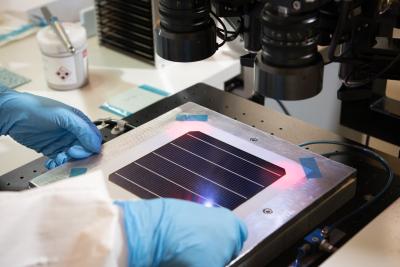New carbazole-based hole transporting materials to improve the stability of perovskite solar cells
Scientists from Kaunas University of Technology and Vilnius University in Lithuania and University of Colorado in the U.S have proposed a method for increasing the stability and performance of perovskite solar cells. The team synthesized a new class of carbazole-based cross-linkable materials, which are resistant to various environmental effects, including strong solvents used in the production of solar cells.
When applied as hole transporting layers, the new materials helped achieve the 16.9% efficiency of the inverted-architecture perovskite cells at the first attempt. It is expected to reach higher efficiency upon optimization.







